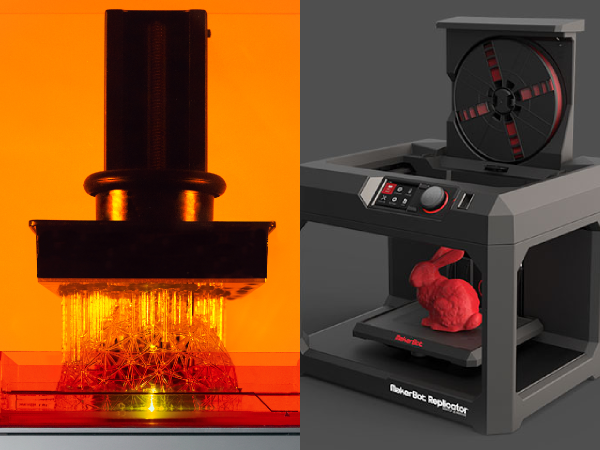Users Rate Highest-Quality 3D Printers
What 3D printer has the best print quality? A new report from 3D Hub based on consumer feedback puts the Form 1 at the top of the list.

What's the best 3D printer on the market?
According to reviews by people who actually use them, it's the Form 1 3D printer by Formlabs ($3,299). Form 1 offers the best print quality among non-industrial 3D printers, according to a June report from independent 3D printing community site 3D Hubs. The second-best was the Projet 660, followed by the Zcorp, both of which are professional-grade 3D printers costing tens of thousands of dollars. The consumer-oriented, $2,899 MakerBot Replicator (5th generation) came in fourth.
To assess print quality, 3D Hub looked at the printers' layer resolution, or the thinness of the layers they put down to create a 3D printed object. But that's not all: The scores, based on user reviews, also account for things like structural warping, dripping, and other deformities in finished print jobs. But even then these rankings aren't exactly apples to apples.
MORE: 10 of the Most Interesting 3D Printers in the World
The 3D Hub list compares printers that use a variety of different 3D printing techniques. Most consumer 3D printers create objects using a method called fused deposition modeling (FDM), in which the printer drips melted plastic through an extruder onto a flat surface, layer by layer. As the plastic cools, another layer is added, slowly creating a three-dimensional finished structure.
By contrast, stereolithic printers like the Form 1 extrude a thin layer of photoreactive resin, then shine a pattern of light onto the resin to harden parts of it. This is a much smoother technique than FDM, allowing for far finer layer resolutions as well as minimizing the chance of drips, clotting and other errors.
The Form 1 has a layer resolution as low as 25 microns, or 0.00098 inch. Most commercial FDM printers have a resolution of around 100 microns. In its June rankings of print quality, 3D Hub awarded the Form 1 a score of 4.83 out of 5.
The downside is that the resin for stereolithic 3D printers is more expensive than the plastic filament for FDM devices. The Form 1 itself is also more expensive than many of the other printers on the list — enough to be considered "prosumer" rather than "consumer." If print resolution is your highest concern, the Form 1 might be the device for you; but if cost is just as important, you may want to try other printers on 3D Hubs' list.
Sign up to get the BEST of Tom's Guide direct to your inbox.
Get instant access to breaking news, the hottest reviews, great deals and helpful tips.
What about the Projet 660 and the Zcorp? Both are made by 3DSystems, and both are professional-level printers. Desktop devices they are not: Each is the size of a large oven. The printers don't have fixed prices (interested buyers can instead request a quote) but the Projet 660 usually goes for around $80,000.
The fourth-ranked 3D printer is far more consumer-friendly. At $2899, the MakerBot Replicator is still far from cheap, especially considering the number of sub-$1000 3D printers that have hit the market this year. According to MakerBot, the Replicator has a layer resolution of 100 microns. The 3D Hub ranking gave its print quality a score of 4.65 out of 5.
The full list at 3D Hubs' website is worth a look, but one other notable printer on the list is the Up! Mini from PP3DP, a subsidiary of Beijing Tiertime Technology. The Up! Mini costs only $600 USD, and it ranked 7th on 3D Hub's list with a score of 4.61 out of 5.
3D Hubs is an Amsterdam, Netherlands-based community 3D printing resource that connects people who have designs to print with people who own 3D printers and are willing to share. For this ranking, the group looked at more than fifty 3D printers on the market, ranging from consumer to prosumer to business-level models. The print quality scores were based on collected reviews by 3D Hubs members.
Email jscharr@tomsguide.com or follow her @JillScharr and Google+. Follow us@TomsGuide, on Facebook and on Google+.
Jill Scharr is a creative writer and narrative designer in the videogame industry. She's currently Project Lead Writer at the games studio Harebrained Schemes, and has also worked at Bungie. Prior to that she worked as a Staff Writer for Tom's Guide, covering video games, online security, 3D printing and tech innovation among many subjects.
